![[Virginia Tech Department of Physics]](../../images/Mis/vtphyslogo2.gif)
Revised 07/11/2016
Physics 2306 Laboratory Equipment List
Lab 010: Magnetism 2
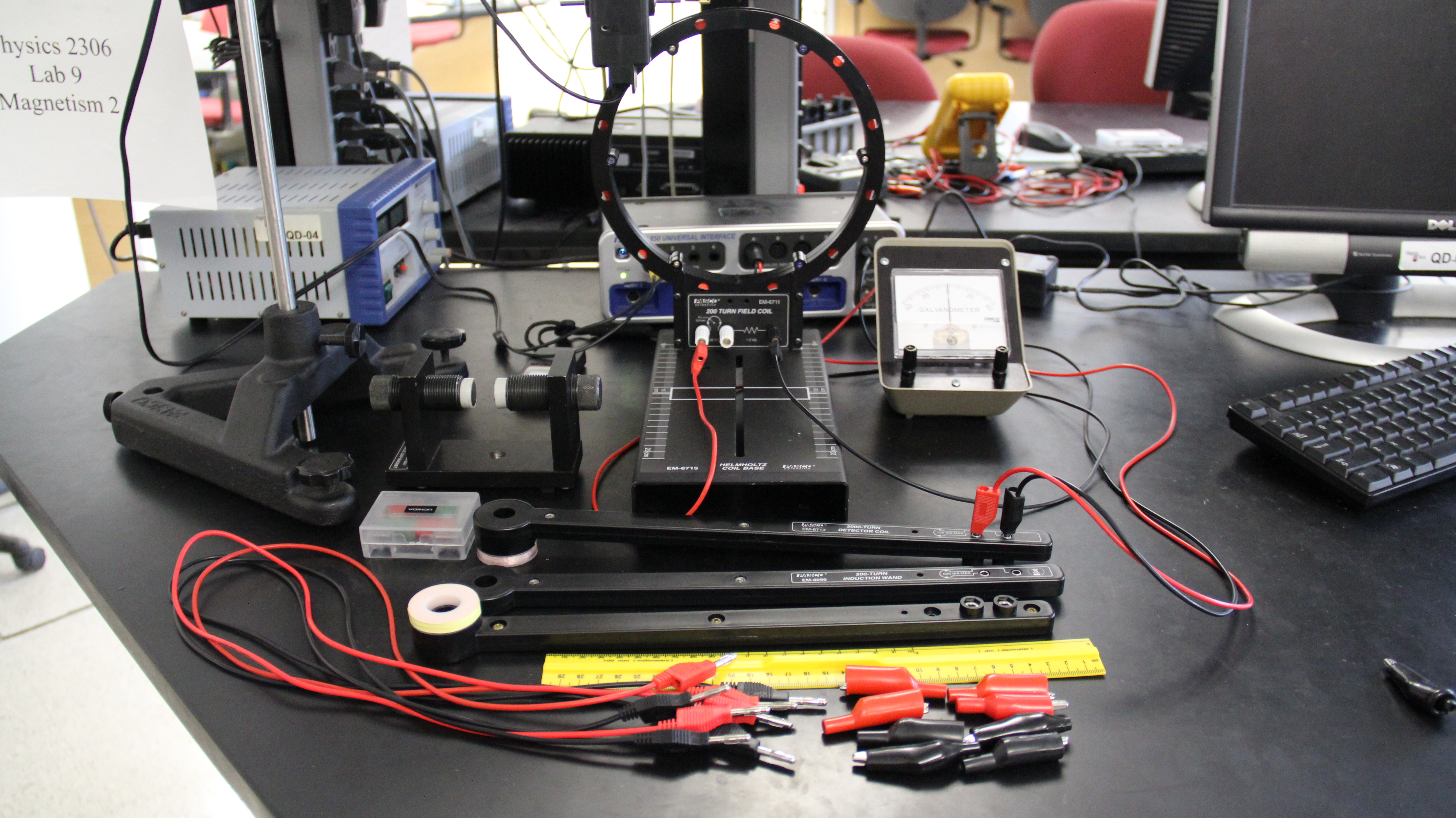
Transition notes:
- The large lab magnet, the cylindrical magnets, the banana plug leads, alligator adapters, and the 45 cm rod on the “A” base stay out from the previous lab.
Equipment List:
- 850 Interface with the following sensors:
- Voltage Sensor in Channel A
- Rotary Motion Sensor that does not need to be plugged in.
- Use a Screw, Thumb - Extended RMS to hold the Wheel in place.
- Pendulum set up:
- 2 x Rod - 45cm
- Right Angle Clamp
- A - Base
- InductionWand - 200 Turn
- InductionWand - 400 Turn
- InductionWand - 2000 Turn
- See the setup notes for more details.
- 2 x Bar Magnet, Cylindrical
- Helmholtz base setup:
- Helmholtz Field Coil attached to the
- Helmholtz Baseusing a
- Screw, Thumb - HelmholtzBase
- Helmholtz Coil and detector wiring:
- Oscilloscope
- BNC to Banana Plug Cable connected to CH2 on the scope
- Shunt with no resistor (not yet in database, stored with wands)
- Shunt with a resistor (not yet in database, stored with wands)
- Function Generator With the following cables attached:
- BNC Tee
- BNC to BNC Cable connected from the Tee to CH1 of the scope
- BNC to Banana Plug Cable connected to the Tee
- See the setup notes for instructions and images of the Helmholtz Coil set up.
- Magnet - Variable Gap
- Galvanometer
- Ruler Metric - 30cm
General Class use :
- Lenz’s law demonstrator (1-2 per quadrant) placed on the TA table and a set up cart. The Lenz's law demonstrator consists of:
- a long tube
(B1)
- two cylinders
(B11.1), one that is magnetic and one that is not.
- stopwatch
(B11.1)
Notes and tests:
- Set up the A-base/RMS apparatus as seen in the setup notes. Attach the 200 turn induction wand to test the height so that it will swing through the center of the variable gap magnet.
- Load the test file “2306 Lab 9 test.cap”. Drop a magnet through a coil wand attached to the voltage probe, and check that the induced voltage is registered.
- Hook the voltage probe to an induction wand and the power amp to the large coil as in the picture. Test that the interface is putting out a current and when you put the wand in the middle of the coil and move it around you get changes in the induced voltage.

This is what your table should look like once set up
Additional Images below:
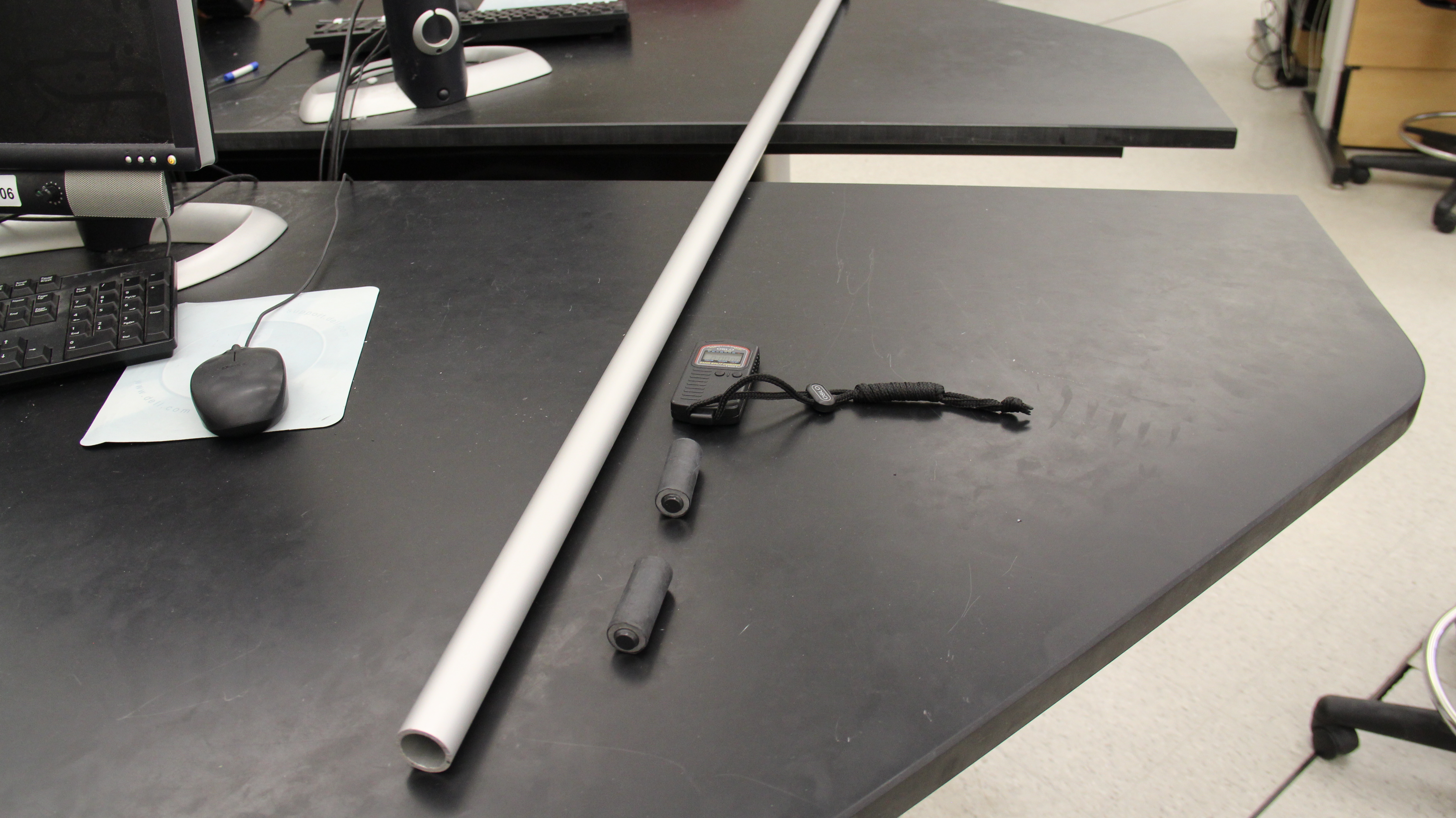
The General class setup.
There should be one Tube, both cylinders, and a stopwatch at each TA Table..
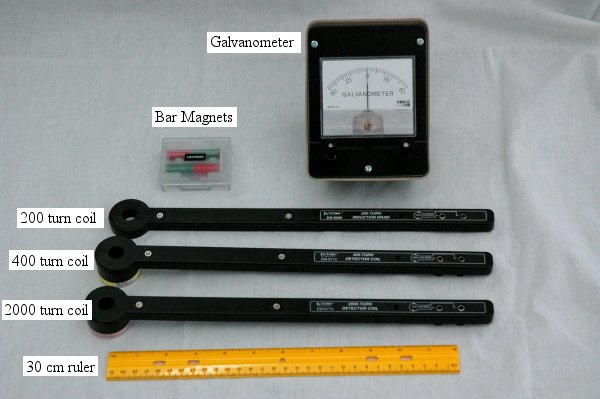
The loose items on the tables.
Additional Instructions Below:
Instructions for the setting up of the RMS pendulum:
- Insert the 45 cm rod into the "A" base and tighten it down. Clamp the second 45 cm rod to the first with the 90 degree clamp.
The horizontal rod should extend about half its length past the clamp. The 90 degree clamp is clamped near the top of the vertical rod.
- Place the rotoary motion sensor on the horizontal rod. The pulley should be mounted on the side of the RMS that says "Pasco Rotary Motion Sensor", and should be facing away from the supporting stand. The RMS cables do not need to be connected to the Pasco 850 interface (yellow DG1, black DG2) as described above.
- Remove the knurled pulley screw and store in a part bin drawer until after the lab is completed. Remove the pulley and flip it over an replace it.
Put a long brass screw (from the parts bin in 103B) into the pulley shaft an slightly tighten it.
- The 200 turn coil shown in the photograph at the right is not install before the lab time. The students will make the final assembly during the lab.
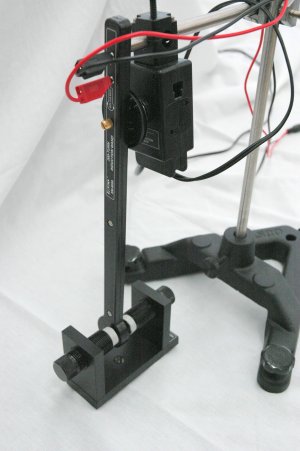
Instructions for wiring and initial setup of the Helmholtz Coil:
- Attach the coil to the hole in the center of the square drawn on the base using the screw attached to the base. The metal ring attached to the screw is there to keep the screw connected to the base, do not remove it.
- The BNC to BNC cable should connect the function generator Tee to Channel 1 of the oscilloscope.
- You should have two BNC to Banana Plug cables, one plugs in to Channel 2 of the oscilloscope and the other goes on one end of the Tee in the function generator.
- The BNC to Banana cable plugged in to the function generator should have the banana end plugged in to the helmholtz coil so that:
- The positive (red) end goes in the left most plug and
- The negative (black) plug goes in the far right coil (also black).
- There should be one white plug left empty in the helmholtz coil
- The BNC to Banana cable plugged into the oscilloscope should be plugged into one of the shunts to make it clear to the students how to use it

![[Virginia Tech Department of Physics]](../../images/Mis/vtphyslogo2.gif)




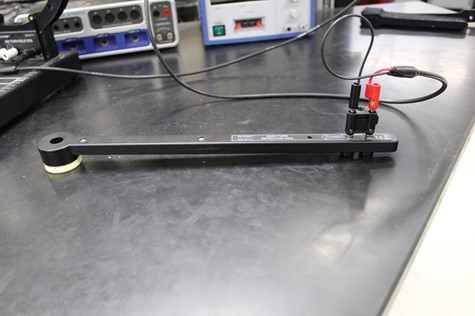
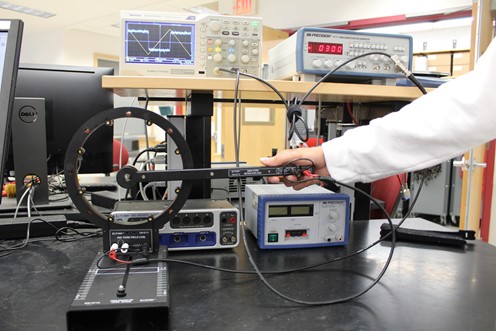


![[HOME]](../../images/Mis/home2.GIF)
![[PREV]](../../images/Mis/arrow2.GIF)
![[PREV]](../../images/Mis/arrow.GIF)
![[PREV]](../../images/Mis/arrownew.gif)